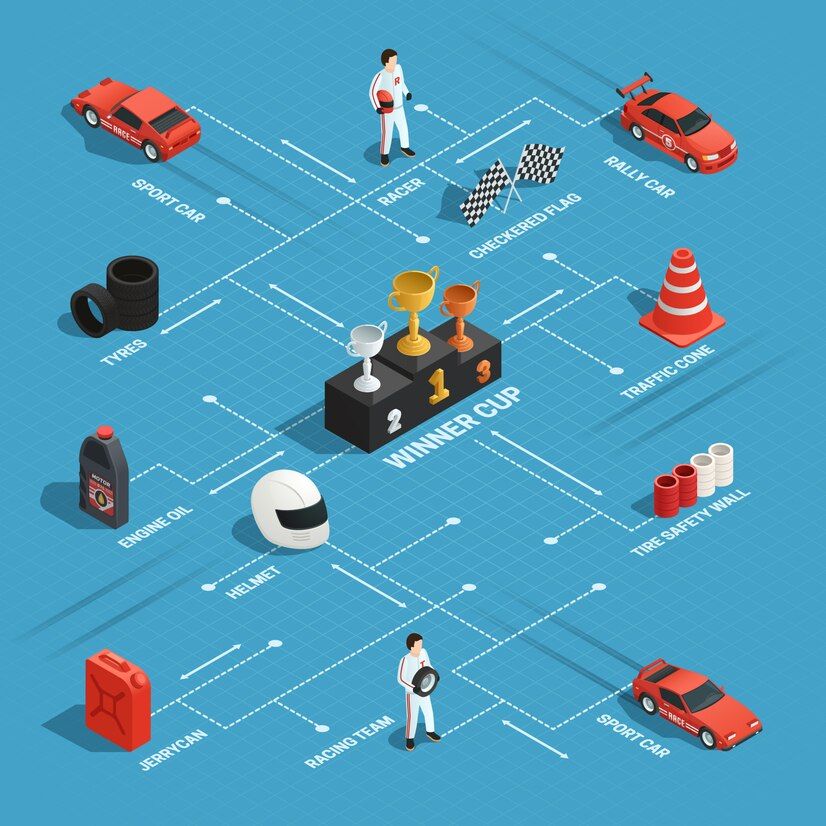Innovations In The World Of Formula 1 Pit Stops
Jun 11, 2024 • 3 views
Formula 1 is a high-stakes game where every millisecond counts. Pit stops, which involve rapid service and refuelling of cars, are capable of making or ruining a race depending on how they are timed. It is like playing games at MelBet website where one has to make snap decisions. These brief intervals have been transformed into seamless operations lasting less than two seconds through amazing innovations over the years. This demonstrates that speed and precision characterise this super-fast pit stop technology.
Evolution of Pit Stop Strategy
Since its inception, the strategy behind Formula 1 pit stops has changed considerably. The first stops were quite crude and slow, mainly directing their attention towards refuelling and basic mechanical adjustments. Teams gradually began to realise how advantageous shorter time spans for these stops would be.
Specialist pit crews started appearing in the eighties, with each member having specific responsibilities during a race stop. Tyre changes added another dimension to the art of saving time through complexity. Today’s teams must focus on every fraction of a second as these can readily influence the outcome of racing circuits. Consequently, teams constantly improve and review their strategies so that they will be able to achieve unmatched speed during the completion of pitting tasks.

Key Technological Advances
A number of technological advancements have reduced pit stop times significantly, thereby making two-second stops possible:
Air-powered wheel guns: Tyre change duration is cut drastically by powerful tools enabling wheel nuts removal or fixing within record time.
Customised wheel nuts: Designed specifically for particular cars, these nuts fit perfectly, thus reducing the fastening period while eliminating any possibilities for cross-threading or holdups.
Car jacks: Advanced car jacks are able to raise or lower vehicles within fractions of seconds, thus smoothing out everything involved in changing tyres.
These innovations combined with continuous training and precise choreography allow teams to achieve outstanding efficiency during pit stops. This demonstrates how technology intertwines itself with teamwork in the quest for racing excellence.
Training and Coordinating the Team
For Formula 1, flawless pit stops can only be achieved through the team’s tireless coordination activities and tough training. Each one of them has a distinct job, and they move in exactly calculated ways. This precision comes from endless hours spent practising to have swift and synchronised actions.
Accuracy of the Pit Crews
So much accuracy and teamwork go into achieving a seamless pit stop. The crew members go through intensive training in order to perfect their roles. From jack operators to tyre changers, everyone must do their thing at the same time. It requires that jacks must lift or lower cars within seconds while tyres get removed or replaced very quickly by these people without errors.
In actual fact, small mistakes may cost so much time since every second counts in this competition. Moreover, this is why crew members practise under various scenarios so that they can deliver error-free pit stops irrespective of pressure or circumstances.
Use of Real-Time Data
Modern Formula 1 pit stops are heavily dependent on real-time data. Teams use advanced telemetry systems to monitor different parameters such as tyre temperature, wear, and car performance amongst others. The information is thus analysed instantaneously when it comes to making an instantaneous decision during a pit stop.
For instance, if there is too much wear on tyres, then the team could opt to change tyres earlier than planned. Similarly, adjustments can be made on the spot if any issues arise with cars seen on telemetry. This instantaneous response to real-time data does not just enhance efficiency in pit stops but also contributes towards better overall race strategy, hence gaining an edge over other teams.
How Pit Stops Influence Race Outcomes
Mastery and rapidity of pit stops can highly determine the outcome of Formula 1 races. A driver may be able to gain a strategic advantage by successfully making a perfect pit stop in which he gains precious seconds that enable him to beat his competitors. These include:
Time gains: It is possible for a quick pit stop to enhance the position of a car, giving it an edge over rivals.
Flexibility in strategy: Fast pit stops enable teams to change race tactics as circumstances arise, leading to their competitive superiority.
Reduced mistakes: The accuracy minimises the risk of penalties as well as mechanical failures, thereby ensuring the race progresses without any hitches.
Generally, the swiftness and accuracy with which pit stops are conducted greatly influence race strategies, which frequently distinguish winners from losers.

Future Innovations in Pit Stop Technology
There are several possibilities which could lead to further development in the way pit stops are done. Automation is anticipated as one of the critical aspects of this process, with robots possibly replacing some people’s tasks. This would improve accuracy and reduce errors, thus continuing to decrease time spent during such breaks.
Another area where innovation could occur is through smart tools. Such tools, consisting of sensors together with feedback devices, could make it more efficient and safe, thereby ensuring each component is tightened properly ever since they have been implemented yet. With these advances, Formula 1 will not lose its position being on top when it comes to technological development, but it will continue fine-tuning fast changeover from old ideas into new ones concerning making pit stops a technical art form.
Conclusion
Continuous improvement in terms of technology and strategy used in making pit stops is necessary if Formula 1 racing has to remain competitive. From past changes to future progressions, every aspect of pit stops contributes to the excitement within this sport. These quick, precise operations are essential for success in racing as teams pursue perfection.
